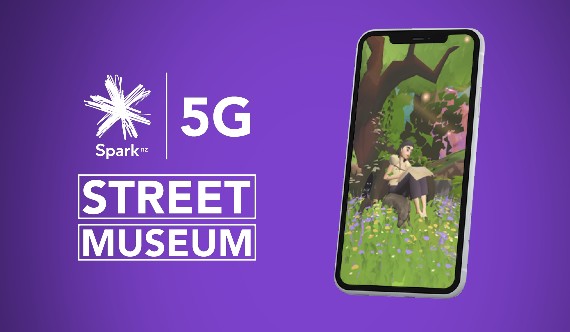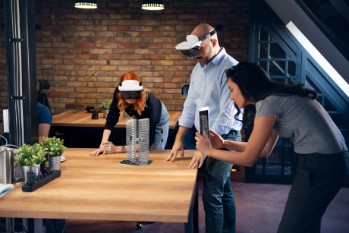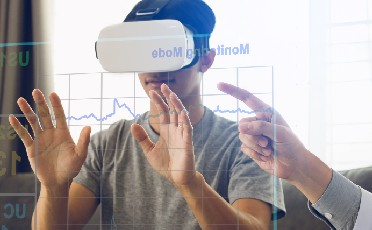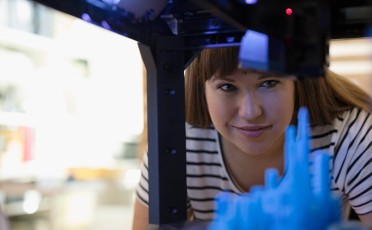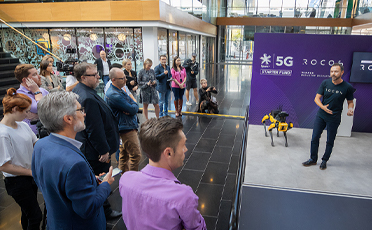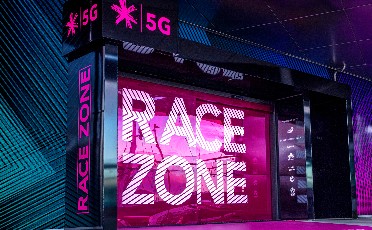At Spark we are starting to think about future product solutions for our business customers in a 5G-capable New Zealand. Each month we’ll share with you some of the global trends that are most relevant to Aotearoa. Spark’s Innovation Lead Joseph Wong shares his insights on Smart Ports.
Ports link vessels and goods with importers and exporters and are critical to the economy. 90% of global trade is done by sea, seaports around the world process over 10 billion metric tons of goods in more than 800 million cargo containers each year. Check out the OECD report
In a globalised economy, goods need to move faster and be more reliable for a country / city to be competitive. Especially in the past three years, COVID has truly tested the global supply chain. Smart ports may be able to recover faster than traditional ports.
In less than 10 years, vessels are expected to sail autonomously. Therefore becoming smart is no longer just an option, but necessary to support future demands in the shipping market. Read about the first autonomous container ship
Delays in overseas ports due to lockdown, staff shortages, and the lack of digitalisation have costed our local economy by the inability to process and clear a backlog of containers quickly. Coupled with ongoing health and safety risks we believe there are a number of applicable solutions we can help support.
As a digital provider, we can play an important role in educating and supporting your digitisation journey. We look forward to engaging with our port customers to work through use cases and digitally transform the industry in coming years.
What is a Smart Port?
Smart Ports are green, digital, and more connected to logistics and industrial environments. They are automated ports leveraging technologies (Big Data, Artificial Intelligence (AI), Internet of Things (IoT), and 4G/5G) and real time data (via IoT). This can achieve better productivity, security, health & safety outcomes, and energy saving while caring more for the environment.
In many places, the Smart Ports are set up as entire communities and ecosystems. Communities are considered a key stakeholder of their operations and are fully integrated with other smart city applications. During operation, Smart Ports share information in real time with upstream (shipping lines and customers) and downstream (logistic companies) partners to allow the supply chain to run smoothly, and the goods delivered on time. Learn about Smart Ports
Use cases for Smart Ports
There are many use cases within a Smart Port. Most ports start by digitalising their existing operation, creating the central hub which forms the “brain” of the operation via the use of Big Data, and AI/ML. The next step is to deploy a scalable and future-proof network (4G/5G). This is the “nervous system” for the port, bringing in even more data via IoT, in real time with improved reliability, accuracy and latency. Once both the “brain” and the “nervous system” are in place, the port can then start targeting individual use cases. It can also automate physical operations in order to carry out tasks with improved speed, accuracy, efficiency, and safety. Check out Smart Port use cases
Remote operations
Autonomous gantry, crane and lift drivers typically work long shifts in a harsh environment, which can lead to OSH risks. Many of the manufacturers of these vehicles are now offering remote controlled options to address this issue. Other benefits include predictive maintenance, improved productivity, and controlling units simultaneously.
Inventory optimisation
With the proliferation of IoT sensors and cameras, it is now possible for a port to create a digital twin of their environment. Coupled with AI and machine learning, the port can optimise their operation. This includes offloading goods from ships to selecting storage location and transporting goods to inland destinations. These goods and containers can be measured and tracked for their customers.
Health & safety
As the traffic flow is optimised, vehicle idle and wait times are also minimised which in turn reduces carbon emissions. Cameras enable real time image analysis allowing hazards to be identified and alarms to be activated, creating a much safer environment.
Written by Joseph Wong, Innovation Lead at Spark NZ
Spark 5G Street Museum
Featuring five immersive exhibits, bringing to life the unseen stories of some of New Zealand’s most iconic creatives.
5G now live across new locations
Earlier this year Spark announced that it will invest an additional $35 million to accelerate our 5G rollout, boosting total mobile connectivity investment to $125 million in FY22, and delivering 5G coverage to approximately 90% of the population by the end of calendar year 2023.
5G global trends: smart logistics
Spark’s Innovation Lead Joseph Wong shares his insights on Smart Ports.
5G global trends: cloud gaming
5G is set to make cloud gaming as seamless as streaming a movie. Find out how the convergence of 5G and cloud gaming may change the landscape for gamers.
5G available now in Napier & Hastings
Spark has announced that 5G is now available in Napier and Hastings.
Immersive Experiences
5G promises a whole new world of media experiences. The scope of what’s possible is about to explode.
5G available now for Connected Mobility Solution
As the deployment of 5G mobile coverage increases around New Zealand, Spart IoT connectivity solutions has now enable support for 5G capabilities.
Five mobile industry trends to watch in 2022
In 2022, we will begin to see 5G making an impact in the business world as the technology matures and coverage improves.
Next Gen Health
See how real-world examples of how 5G technology can transform the health system.
Accelerating the 5G rollout
Spark has announced that it will invest an additional $35 million to accelerate its 5G rollout.
Industry Disruptors
5G is set to change the way businesses operate in a fully connected world. Learn more about how 5G will optimise industry.
A sustainable future for NZ
5G isn't just good for business. It's potentially good for all of us. We've barely begun to explore the ways New Zealand can benefit from 5G adoption.
Ground robotics in action
The practical application of autonomous robots is quickly shaking up industries around the world - creating new ways of working. Join David Inggs, CEO and Co-founder of Rocos, as part of this month’s Spotlight Series on Automation.
Exploring 5G technologies with Joshua Ness
Heading up the Verizon 5G Lab in New York, Joshua works with local innovators to explore the boundaries of 5G technology, co-create new applications and rethink what’s possible in a 5G world. He covers everything from the history of wireless connectivity, a 101 on the key 5G properties, right through to what a 5G future will look like.
Exploring 5G technologies with Marcus Weldon
Marcus Weldon, former CTO of Nokia and President of Nokia Bell Labs discusses how 5G could bring about the 4th industrial revolution, and in this webinar he will explain why. The session highlights the potential 5G opportunities that will create the most value for your business.
5G Starter Fund
Spark went on a nationwide search to find New Zealand’s most innovative 5G ideas. We then committed to supporting the winning, leading-edge Kiwi businesses in bringing these solutions to life through the 5G Starter Fund.
5G Race Zone
The Spark 5G Race Zone was a free, all ages showcase of the amazing tech that Emirates Team New Zealand use to make the boat go faster.

